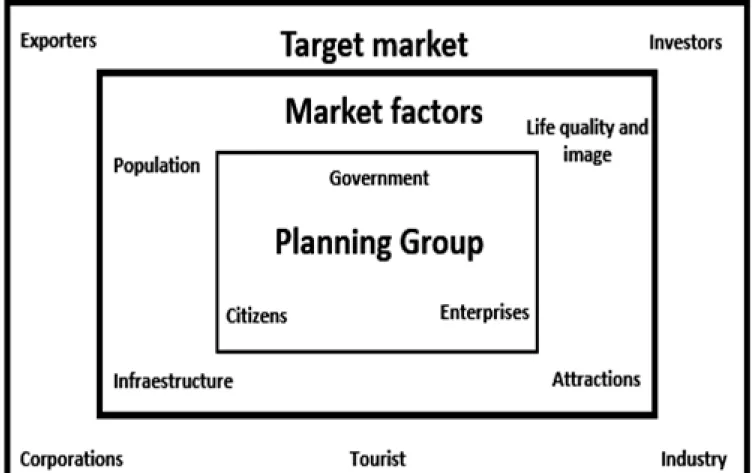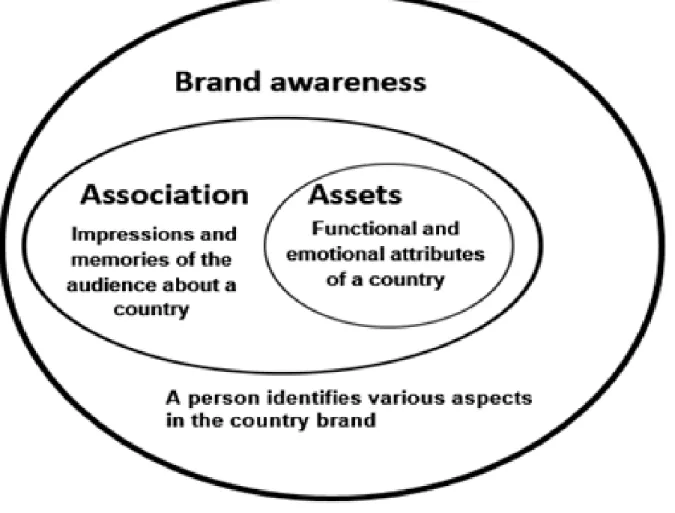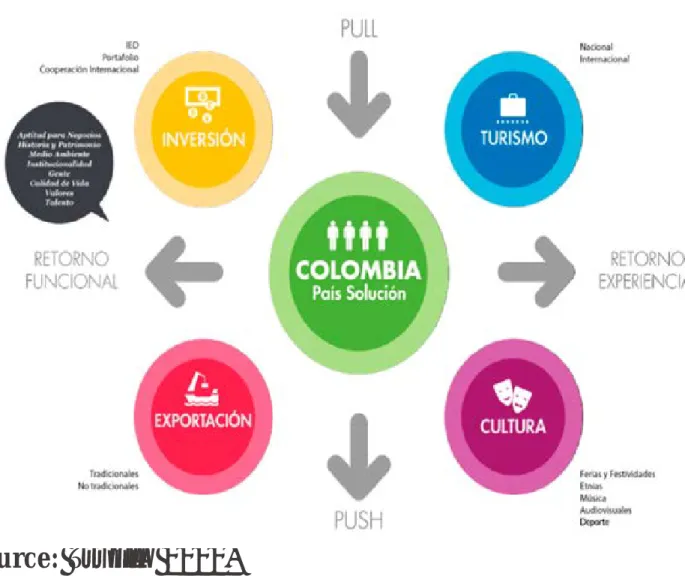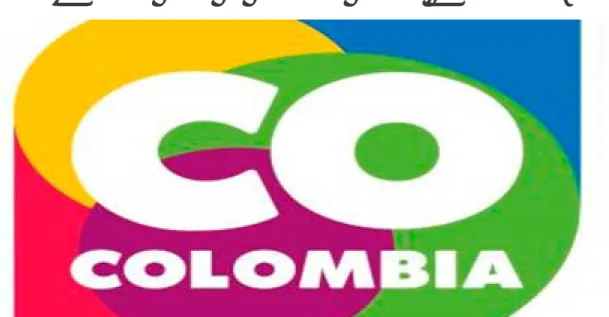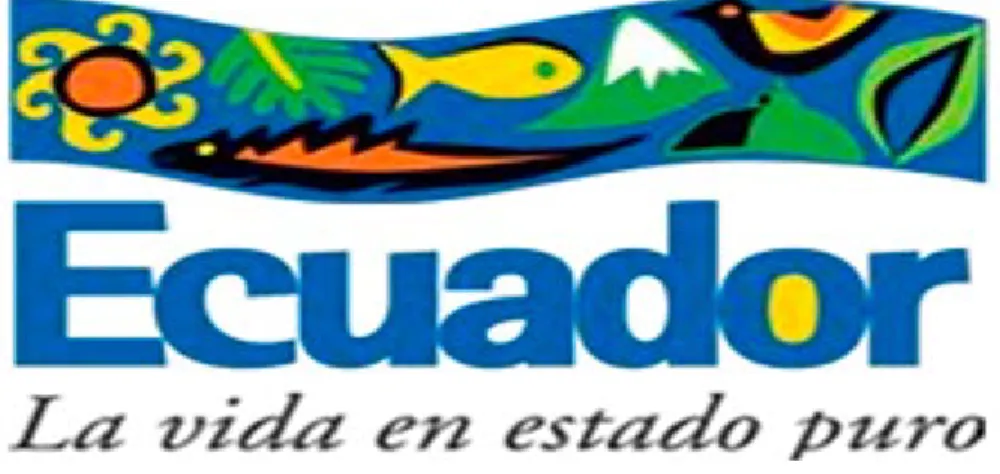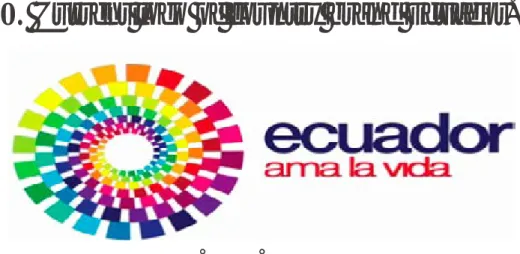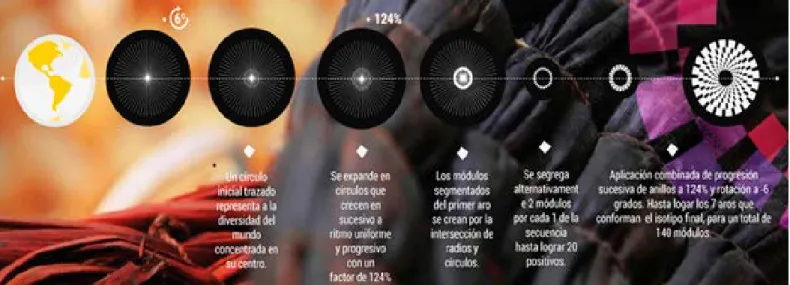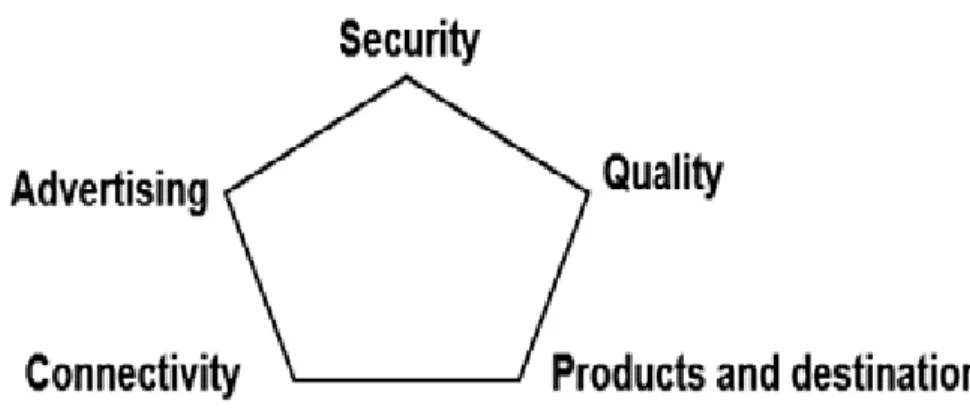GIUSEPPE VANONI MARTÍNEZ JESÚS ALFONSO OMAÑA
FABRICIO VASCO MORA MARÍA PAULINA BRITO
GIUSEPPE VANONI QUEZADA PHANOR RAMOS ROMERO ANA SUÁREZ DÍAZ
en Iberoamérica
GIUSEPPE VANONI MARTÍNEZ
JESÚS ALFONSO OMAÑA
FABRICIO VASCO MORA
MARÍA PAULINA BRITO
GIUSEPPE VANONI QUEZADA
Autores:
GIUSEPPE VANONI MARTÍNEZ
JESÚS ALFONSO OMAÑA
FABRICIO VASCO MORA
MARÍA PAULINA BRITO
GIUSEPPE VANONI QUEZADA
PHANOR RAMOS ROMERO
ANA SUÁREZ DÍAZ
Editor:
Giuseppe Vanoni Martínez
Año de publicación:
2018
Diagramación:
Jorge Ponce Figueroa.
ISBN:
978-9942-35-382-5
Giuseppe Vanoni Martínez. Doctorado Universidad del Rosario, Bogotá Colombia. Investigador del Grupo Orygem (Organización y Empresa), categoría A de Colciencias. Profesor de postgrado en el área de estrategia y empresas familiares del CEIPA Business School, Medellín. Ex profesor de la Universidad Espíritu Santo de Ecuador.
Jesús Alfonso Omaña Guerrero. Doctorado Universidad de los Andes en Venezuela. Profesor visitante internacional, Kansas University en Estados Unidos. Profesor de la Universidad de los Andes, sede Táchira, Universidad Libre de Colombia y profesor de cátedra del CEIPA Business School de Medellín. Miembro del grupo de investigación Amihedure. Miembro del Instituto de Estudios Humanitarios de las Naciones Unidas.
Fabricio Vasco Mora. Máster en investigación de gestión de la Universidad Pablo de Olavide de España. Profesor de la Universidad Internacional del Ecuador (UIDE).
María Paulina Brito Ochoa. Máster en administración de empresas de la Espae Graduate School of Management. Profesora y especialista en innovación de la incubadora de empresa de la Universidad de Guayaquil.
Giuseppe Vanoni Quezada: Joven investigador de Binghamton State University of New York, Harpur College of Arts and Science, Estados Unidos.
Phanor Ramos Romero. Máster en administración de empresas. Profesor de la Universidad Estatal de la Península de Santa Elena, Ecuador.
The expansive process of globalization has influenced the modern businessmen to acquire managerial skills that are not only focused on selling products because the circumstances surrounding the current business situations demand many other abilities from the managers and they have to be applied when it’s time to negotiate with the commercial partners of the border countries, regional, international and multinational companies. This implies, among many other things, to know the culture, consumer habits and social habits, without leaving aside the different ways of negotiating according the region or country where we’re at.
Other very important abilities are the ones related to the day to day topics, this means that the global manager always has to be familiar with the situations of the daily life, along with the proficiency of foreign languages. Both competencies are essential and the universities are making all the efforts to prepare the best XXI century professionals.
This book was designed under these criteria, it’s been written in english and spanish because they have been recognized as the business languages, and it covers the latest business topics such as the importance of the country brands in the international contexts; the importance of the wine industry and its growth strategies in high production countries analyzing the case of Spain; the economical, structural and institutional potential of Asia, and the cooperation among nations and regions for a mutual growth.
Country brand Ecuador: A comparative analysis between Colombia, Perú and Chile.
1.
Introduction
11
2. A review of the concept country brand
13
2.1. Process for building a country brand
15
2.2. Phases for building a country brand
16
2.3 Relation between country image and country brand
19
2.4.
Positioning
a
country
brand
22
3. Experiences of country brand in South America.
23
3.1
Country
Brand
Colombia
24
3.2.
Country
brand
Perú
27
3.3.
Country
brand
Chile 29
3.4.
Country
brand
Ecuador
31
4. Analysis of the strategy country brand Ecuador in
comparison with Colombia, Perú and Chile
37
5.
Conclusions
40
6.
References 42
*Giuseppe Vanoni Martinez *Ana Suarez Diaz Abstract
The states are very concerned about the image they portray to others; therefore, the “Country Brand” becomes the expression of their identity. To work on it in an integral way is a long-term action whose purpose is to strengthen the cultural presence, to attract investors, to promote both local and international tourism and to make competitiveness stronger. The current paper of literature review analyzes the country brand – Ecuador, its building process and the purposes of this strategy. It also analyzes strategic actions of countries such as Colombia, Peru and Chile, contrasting them with the Ecuadorian case. Concepts and contributions about the meaning, the foundations and elaboration of “Country Brand” were covered. The results show that, even though, the Ecuadorian plan has produced some results in the hospitality area and, as a tourist destination, in the business (investments) and cultural area the results are not significant. Therefore, it can be concluded that, although, the Ecuadorian government has made economical efforts to place the country as one that loves life, it is also true, that it hasn’t involved neither private nor public sectors, ONGs, the Church, producers, exporters, as part of a country project, which, as a consequence, hasn’t let Ecuadorians feel completely identified with the implemented strategy.
Key words: Business opportunities, country trademark, international competitiveness, international environments, globalization.
país, se convierte en un reflejo de su identidad. Gestionarla integralmente es una labor de largo plazo, cuyo objetivo es la de afianzar la presencia cultural, atraer inversiones, fomentar el turismo local e internacional y fortalecer la competitividad. En el presente artículo, de revisión bibliográfica, se analizó la marca país Ecuador, cómo fue su proceso de construcción y lo que se intenta conseguir con esta estrategia. Asimismo, se analizaron las acciones estratégicas de países como Colombia Perú y Chile, contrastándolas con el caso ecuatoriano.
Para conseguir esto, se abordaron los conceptos y aportaciones expuestos por diferentes autores, sobre lo que significa la marca país, en qué radica y cómo se la elabora. Los resultados obtenidos, demuestran que, en Ecuador, los esfuerzos han dado sus frutos en el aspecto hotelero y, como destino turístico, pero aún son incipientes los resultados en el campo de negocios, nuevas inversiones, así como, en lo cultural. Por lo que, se concluye, que si bien el Gobierno Nacional, ha realizado esfuerzos económicos para posicionarse como un país que ama la vida, también es cierto, que no ha vinculado a sectores públicos, privados, ONG, iglesia, productores, exportadores, como parte de un proyecto de país, lo que ha propiciado, que no exista una verdadera identificación de la población con la estrategia implementada.
Palabras clave: Marca país, competitividad internacional, entornos internacionales, globalización, oportunidades de negocios.
Introduction
During the last decades and in an increasing way, the Latin American
governments along with their public institutions, as well as with
the private organizations, have been working on the creation of a
brand for their countries, while doing it they have accomplished
important goals on aspects such as the competitiveness and the
images portrayed by their corresponding countries and cities
(Martinez, 2007).
According to Porter (2013); Noboa, (2006); Restrepo, Rosker and
Echeverry (2008), the stronger the country brand is the easier it’s
going to be to compete in a modern, internationalized and globalized
world. Especially, if the theoretical and practical principles of
branding can be applied not only in the managerial context (Aaker,
1996, 1999), but also in a specific region, city or country (Kotler,
Bowen & Makens, 2003), although with some methodological
differences at the moment of being applied (Marzano, 2014).
Despite what has happened in the neighboring states, which have
obtained positive results in the construction of the country brand,
Ecuador hasn’t made enough efforts, either because the governments
haven’t been interested in doing so or because they haven’t been
aware of how important this is as a source of opportunities for
internal growth and for reaching new markets. Even though, since
2014 there have been some results due to the efforts of the current
government.
As the perceptions are so important for the decisions taken by the
direct or indirect consumers, the construction of the brand tries to
produce a precise, real and integral idea about a specific country;
the goal of this is to attract investments, to sell their own products
in foreign countries, to strengthen the exports and to promote
tourism based on a proposal of value that produces differentiation
(Valls, 1992).
In order to support what has been stated above, this paper analyzes
the term country brand as a concept and its goal too. Some strategies
implemented in Latin American countries such as Colombia,
Peru and Chile, are evaluated and their historical
1,
geographical-climatic
2, cultural
3, ethnical
4and political-social
5similarities make
it easier to compare experiences of the construction of the brand
between them.
Likewise, and considering that the current image of a country might
be seen as an obstacle (Llorente, 2011), this document will cover
the factors that have influenced the creation of a brand and it will
also explain the function of the brand on each one of us (Marzano
2014).
Therefore, and according to what has been mentioned the goal of
the article will be: to analyze the strategy of the country brand of
Ecuador, how it was designed and built, comparing it to the ones
applied in Colombia, Peru and Chile. Through these steps it will
1 The four countries that will be analyzed have similar historical origins related to their conqueror and
their processes of independence and later republican life
2 The Andes’ mountains go across those countries which give them similarities related to their coastal
zones, mountains, deserts and the Amazon rainforest. They also share the same ocean.
3 In the four cases there’s a rich origin in the Inca culture as the predominant one with its subdivisions
that were created during all the Tahuantinsuyo Empire.
4 In these four countries, in a bigger or smaller quantity, black and white people, mulattos, mestizos (mixed
race) and Amerindians inhabit their territories.
5 Problems like the colonialism, coup d’etat, military governments, civilian and indigenous upheavals,
be possible to differentiate and explain how the strategy of Ecuador
pretends to get a position that distinguishes it from the rest of the
countries.
2. A review of the concept country brand
The multiple and various experiences of application of the country
brand have caused a wide multidisciplinary and interdisciplinary
debate among the academics of social sciences and the professionals
of the public area, who have agreed on the fact that the country
brand is, nowadays, a relevant strategy of economic development
(Seisdedos, 2006). To use just a specific country as a support to
reinforce aspects related to political and economic interest is not a
strategy of the new millennium (Saavedra, 2012). Even in the 16th
century, countries such as Ireland and England made promotional
efforts to fuel the economies of their nations (Borsay & Proudfoot,
2002).
As it’s been said by Valls (1992), the concept of country brand is
linked to the perceptions of the real – potential – direct- indirect
consumers. The perceptions are the sum of all those elements
that made up a country, besides the ones that communicate the
characteristics of a nation. Even though the common elements are
shared, each country is different.
For Occhipinti (2003, p.193) “it is the study and determination of
the various differential values that belong to a country, region, or
city, with the goal of positioning products, services, places, with the
use of a strategy that is based on the relationship origin-product or
service”.
according to what each country means by its own (Fan, 2006),
therefore, they will keep different cognitive categories according
to the country and the brand (Lucarelli & Berg, 2011). Thus, the
image of a country becomes the base for building the brand, in that
way, the actives and passives, related to the name and symbols of a
country, add or detract the value provided by a product from that
nation or to the tourist services offered in that country (Sánchez,
Cubillo y Cerviño, 2005).
Iglesias & Molina (2008, pp.109) define the country brand as “the
use of the typical characteristics of the nation’s life as a way of
influencing the image and the country’s perception on the civil
society, the public opinion, and the foreign media, increasing the
international prestige of the State, improving its political position
and its economic competitiveness in the global system”. Thus, a
strategy is established with (intangible assets) the goal of creating
and transmitting a country’s image, along with a country brand
(logo and slogan), including the national sub-brands.
On the other hand, for Anholt (2009) the country brand is described
as the competitive identity of a place, so that this criteria removes
the dichotomy that exists between the concept that is the reason of
study and the concept of the tourism brand of the country, which
in many cases diminishes the efforts made in building a relevant
country brand.
Molina (2009) the products, packing and brands can be modified,
the countries can’t, the perception is what changes in this topic.
Summarizing and according to Echeverry, Rosker & Restrepo
(2008) the most relevant objectives while building a country brand
are:
a) To produce just one integrating identity among all the
productive activities of a country.
b) To project an image that represents an international country
within the productive- exporting area.
c) To concentrate the communication with just one message
before the international markets.
d) To strengthen the culture of values and the national identity
among the inhabitants.
e) To publicize in order to portray a unified identity.
2.1. Process for building a country brand
For the construction of a country brand and for reaching
competitive advantages, Noboa (2006), Echeverry, Rosker &
Restrepo (2008) mention that the countries must complement
their planning strategies with the economic programs, along with
the implementation of marketing strategies. In order to accomplish
its construction, Mukoma (2008), recommends to work on three
key points: 1) the governments, companies, media as well as the
centers of education must participate, 2) to seek advice through the
leaders of opinions in this area, and through common citizens, to
identify both their perceptions and their opinions, and then, 3) to
develop a clear and positive idea for a brand to get a solid position.
In this way and according to what is expressed by De Elizagarate
(2010) in the marketing of sites or places, there are three levels to
Graphic 1.
Levels of marketing of places or sites.
Source:
the author based on De Elizagarate (2010); Kotler, Haider
& Rein (2007).
While interpreting the graphic 1, from inside to outside, the planning
group is the first one in being covered, this is the space to define
what a country can offer, where the community is diagnosed and the
plan of action is developed. The level 2 would be the identification
of the most relevant characteristics of the markets they’re focusing
on. And the third level will be those target markets to which the
efforts will be directed (Kotler, Haider y Rein, 2007).
2.2. Phases for building a country brand
covers both the internal environment of the country and the
external one, because these steps allow to identify how the image
is being perceived and it also helps recognize the historical and
cultural aspects, along with values that will be the foundations of
the brand. But, as it’s been recommended by Mukoma (2008), the
preferences, needs, wishes and expectations of the actors involved
in this practice, either they are internal or external players, can’t
be left behind. With the collected information, the following step
is to evaluate the conditions of the perception and image of the
brand in order to give a definition of the added value of a country
(Echeverry, Niculcar & Parra, 2013). Echeverry & Trujillo (2014),
explain that there are three elements that produce this value
(see
graphic 2).
Graphic 2.
Elements that produce value to a country brand.
Source:
the author based on Echeverry & Trujillo (2014, pp.
The second step is about the identification and the definition of
the groups of interest
6, who are the target of the country marketing
campaign (Marzano, 2008), these ones are the tourists, investors,
business people, cultural organizations, exporters and residents.
Once the markets have been established, the marketing strategies
along with their specific objectives are designed, these strategies
will vary according to its uses: tourism, exports, either for business
people or for any other well defined target market. Later, the tools
of interaction with the market will be identified, which cover since
the most traditional ones such as radio, television, newspapers, to
the application of technology with the use of virtual communities,
along with advertising events, without leaving aside the fact that
the governments are the most involved ones in this process, with
the purpose of not sending messages that might distort the real
meaning of what really wants to be sent to the world (Echeverry &
Trujillo, 2014). Finally, the proposal of value of the country brand
must be defined and it has to include a series of characteristics that
are detailed in the chart below
(see chart 1).
6 It’s important to consider that the academia, the private and public sector must be involved, to define on
Chart 1.
Characteristics of a proposal of value of a country brand.
Source:
the author based on Echeverry & Trujillo (2014).
In chart 1 it could be synthesized that each state decides how to
design a strategy of country brand but, aside from the decision
that might be taken, in order for the strategy to give results for the
reality of a specific country it’s important to include all the key
persons, institutions, public or private organisms (Edmer, 2010).
2.3 Relation between country image and country brand
Approximately since the decade of the 60s, there’s been an intense
academic debate about the importance of the effect of the country
of origin, over the international business and the competitiveness of
the countries (Marzano 2010). This effect explains the acceptance
or rejection from the consumers, when the barriers are intangible
(Wang & Lamb, 1983), of a product from a specific country of
origin (Nagashima 1970). And, although, the product is only one
Characteristics Author(s) Year
A way of promoting and sharing culture abroad.
Young & Yongjun 2013
Behavior of economics & foreign policy.
Kemp & Williams 2012
Unions & associations to which the brand belongs.
Sartori, Mottironi & Corigliano
2012
Products that are exported. Aitken & Campelo 2011 The way of competing with other
countries in areas such as sports and entertainment.
Lubowiecky & Basinska 2011
The way of treating visitors and the behavior of citizens abroad.
Yang, Shin, Lee & Wrigley
variable of measurement, it can strengthen or minimize a country
brand, and as it is a broader concept it might be affected negatively
(Kotler, Bowen y Makens 2003).
As it is mentioned by Valls (1992), the country image is the perception
their real, potential, direct or indirect consumers have about it, in
other words, it’s the alleged reputation of the country (Nagashima,
1970). It is important for each country to establish its own identity
through the identification of their specific characteristics. As it is
explained by Souiden, Pons & Mayrand (2011) the territory must
communicate its competitive advantages according to its reality
(see chart 2).
Chart 2.
Diverse conceptualizations of the country image.
Source:
the author.
Criteria Author(s) Year
Beliefs, myths, history and culture. Mental associations of a territory (real or fictitious).
Echeverry & Trujillo (2014)
Built over its reality. Jain & Winer (2013)
Associated to perception such as touristic destinations, to invest and to purchase preferred brands.
Wang, Li, Barnes & Ahn
(2012)
With the perception and experimentation, they define
the impressions and
experiences that have marked a difference in their minds.
For Madichie & Yamoah (2006) country brand is a concept
that’s been linked to the perceptions of the consumers about the
attributes of origin of a country; in other words, the perceptions
are considered as the way people conceive or interpret the stimuli
(Arellano, 2002, 2008).
Therefore, the perceptions, as expressed by Echeverry & Trujillo
(2014) are built from three sources: 1) the experience; 2) opinion
and media leaders; 3) the reference groups. In that way, the
consumers build a global perception of the country, based on
experiences they’ve had, either positive or negative, before the
commercialization of their products.
Because of this, a series of international studies have been conducted
which show the importance of a country image and how it influences
on its competitiveness in a positive or negative way, as it’s been
demonstrated by Schooler (1965); Nagashima (1970); Bailey &
Pineres, (1995). Although other studies such as the ones of Peterson
& Jolibert, (1995); Jaffe & Nebenzahl (2006), explain that their
practical implications make it more complicated to understand. All
these studies lead us to the importance of building a solid country
brand, while working, first, over the erroneous perceptions the
consumers make up in their minds.
2.4. Positioning a country brand
The strategy of positioning a country brand has as a goal to give
value to the origin of the products, organizations and persons in
the international markets, and create a symbol of distinction and
recognition that will let them develop tourism, investments and,
as a consequence, their economy. This means that the construction
of the differentiation and the way how it is applied for a specific
country will bring, implicitly, the values, beliefs and characteristics
that form one society and how the other ones can be identified
(Passow, Fehlmann & Grahlow 2005).
As it’s been mentioned by Harrison – Walker (2011) a country
brand has as a goal to establish a unified, well defined and clear
identity, avoiding regionalism and reinforcing the concept made
in, producing major trust both in the internal and in the external
performance of the country.
Tourism is very important nowadays, as a result, the government
is focused on strengthening the country brand globally by rescuing
the five factors that according to Moilanen & Rainsito (2009) are
relevant for the tourist: heritage-culture, business skills, value
system, quality of life and the tourism itself. These aspects enable
people to make associations when they hear the name of a country
or look at a picture that represents it, because they produce
differentiation (Laxe & Palmero, 2009).
present micro segmented offerings of tourist destinations which,
along with strategies of direct communication, will reinforce the
implemented strategies for a country.
3. Experiences of country brand in South America.
The governments are formulating strategies that help improve
their image before the world because the countries or regions
have turned into strategic ones according to the point of view
of the competitiveness (Akotia, Ebow Spio, Frimpong y Austin,
2011); especially in Latin America where they have image issues,
not only because of their economic situations but principally
because of the distrust that’s been generated along the years from
the corruption and insecurity in the state institutions, which has
caused differences in the process of building the brands in these
countries, some countries like Peru and Costa Rica have focused
on tourism, others like Brazil, Colombia and Mexico have been
characterized as emergent brands, and United States has been
identified for its leadership (Echeverry & Trujillo 2014). As it had
already been expressed and with the purpose of illustrating cases
of South America, the principal characteristics in the construction
of the brand in Chile, Colombia and Peru will be covered
7. The
chart 3 shows the ranking of their positions.
7 These countries have been taken as a reference because the periods of time working on country strategies
Chart 3.
Positions of country brand in South America.
Source:
the author based on Country Brand Index (2013- 2014).
3.1 Country Brand Colombia.
After the phase of using the slogan “Colombia es pasión” (“Colombia
is passion”), which was launched in 2005 (see graphic 3), the
objectives were re-defined, trying to publicize the attributes abroad,
emphasizing on the country’s advantages and comparing them
with the other countries of the region with similar characteristics;
the goal of this action was to improve the perception and to build
trust and a wider knowledge about what Colombia really means,
because as Echeverry, Stay-Niculcar & Parra (2013) have said, the
foreigners had polarized perceptions about this country, it could
have had a rich natural wealth, gastronomy and coffee culture,
but there was also a negative image associated to violence acts,
insecurity and drug dealing, this stigma was attached to it since the
decade of 1980s.
Position 2013-2014 Country
1 Brasil
2 Argentina
3 Chile
4 Perú
5 Uruguay
Graphic 3.
Logo and slogan launched in 2005.
Source:
Proexport Colombia (2005).
In 2011, after the first country brand concluded its lifecycle,
President Juan Manuel Santos created the Organization Country
Brand
8, who defined four axes
(see graphic 4)
the culture, the
tourism, foreign investment and exports.
Graphic 4.
Model of Strategic Communication.
Source:
Trujillo 2012.
8 Linked to the Ministry of Industry and Tourism and the High Presidential Counseling for
The purposes were also redefined in order to capture opportunities
in: a) to obtain foreign investment, b) to promote and increase
tourism, c) to promote cultural identity, d) to increase exports, f) to
gain environmental recognition, g) to prepare competent human
capital, g) to develop modern, serious and honest institutions
(Marca país Colombia, 2013). With this background the new logo
was designed
(see graphic 5)
, whose goal is to portray the mega
diversity of the country, associating the regions to colors which
will be given different meanings (Marca País Colombia, 2012).
Graphic 5.
Current logo of country brand Colombia.
Source:
Country Brand Colombia (2013).
a) Yellow represents the sun and the minerals.
b) Blue represents the richness of the rivers and the sea.
c) Red is linked to the warmness, talent and passion of the people.
d) Green is in its mountains, valleys and plains.
established in 1974. Likewise, a song called “Colombia”
9was
created, which travels around the diverse musical genres of the
country
10(Marca País Colombia, 2012).
The country brand Colombia is in the introductory phase, it has
been conceived as a government policy and not as a State policy,
and according to Echeverry & Trujillo (2014), this is a challenging
step because there might be people against it, although Futurebrand
(2012) predicts a substantial improvement and this web organization
places Colombia among the 15 brands that will lead the future.
3.2. Country brand Perú
The new country brand was launched in 2011, it is based on a
strategy that wants to obtain investments from foreign companies,
it also wants to be able to export their products and get more
access to tourism; the logo
(see graphic 6)
wants to picture Peru
as a multifaceted country that catches everyone’s attention for how
special it is (PromoPerú, n.d.).
Graphic 6.
Logo of country brand of Peru.
Source:
Taken from PromoPerú (n.d.).
9 Written Miguel de Narváez
The spiral used in the letter P, represents changes, evolutions and
transformations, it gets prolonged without interruptions to form
the word Peru. The difference from the logo used until 2010 along
with the slogan “Perú el país de los Incas” (“Peru, the country of the
Incas”) (see graphic 7), and the current one is that this one wants
to communicate new and varied dimensions, focused specifically
in the name of the country, without representing any Inca culture.
As there’s not any verbal complement attached to it, each area
can decide the communication approach that wants to give to it,
although it goes with the song “Enamorado de estar aquí
11” (“In
love for being her”) which specifies what the country has, told by
people from different cities
12(PromoPerú, n.d.).
Graphic 7.
Logo of the first country brand Peru.
Source:
Taken from Historia Vive by Promoperú (n.d).
The strenghtening of Peru country brand should lead this country
into the pursuit of consensus around the different sectors (private,
public and government) and to the investment in touristic
infraestructure, because acccording to data from World Economic
11 Its author is Fahed Mitre
Forum (2013) it’s ranked 61 in the competitiveness index, which
gives this country a positive grade on macroeconomics, efficient
on labour and good development in financial market; these
characteristics along with the cultural, human and natural richness
turn this country into a privileged one, and this is a guarantee
of social and economic stability for the upcoming years (Centro
Nacional de Planeamiento Estratégico, 2011).
3.3. Country brand Chile
As it’s been said by the Committee of Foreign Investments of the
Government of Chile, the country has a position associated to trust
due to social and political stability and the achievements in public
policies, which has caused credibility in the foreign investors
(Gobierno de Chile, n.d.).
Because of this good performance, it is considered the most
successful Latin American country in projecting its identity, it’s
been able to combine its resources and effort among the state and
private institutions to strengthen the government and it also has
a policy of open economy and free trade along with its exporting
policy.
Chile got an assignment of USD. 25.000.000 in 2004 after a
public invitation to tender, the process started with the design of
a communication strategy of the country brand Chile. For the end
of 2005, the campaign “Chile sorprende siempre” (“Chile always
surprises”)
(see graphic 8)
was launched with the purpose of
Graphic 8.
Logo of country brand Chile.
Source:
Taken from the offical site of Turismo de Chile.
The process of building the logo shows that Chile is a country
that surprises, by using stars with color ochre it is shown that the
surprise is abstract; modifications come out of the tips of a lonely
star that is used in the flag to suggest diversity and humanity
(Ponichianik 2012).
With the participation of the private and public areas, a concept for
integration into the global market was designed, with strategies that
involved technological-scientific exchanges, attraction of foreign
investment and promotion of culture; the three axes of the brand
were: 1) geographic diversity because it has glaciers, seas and deserts;
2) the stability of the country because of its democracy and solid
economic conditions for foreign investment and, 3) it’s inhabitants
because they’re nice, kind and efficient at work (Chadwick, 2013).
with market intelligence, investment, competitiveness, quality
tourism, advertising and sustainability (Gobierno de Chile, 2012).
3.4. Country brand Ecuador
The first attempt to position the country brand Ecuador was in
2001, with the campaign (“Life in pure state”) (Iglesias, 2009) but
as this one didn’t cause any impression, it was removed as a country
strategy
(see graphic 9).
Graphic 9.
First logo and slogan of country brand Ecuador.
Source:
Taken from wwwallikawsay.com
In 2010 a communication strategy was structured, it pretended to
turn the country into a tourist power by using new elements such
as the “Sumak Kawsay (Kichwa) (Good living), so the previous
slogan was switched for “Ecuador loves life” (“Ecuador ama la
vida”)
13(see graphic 10).
But, according to the words of President
Rafael Correa: “Ecuador will not only be a tourist brand but also
a country brand that can be identified as the synonym of life and
love” (Andes, 2010).
Graphic 10.
Current logo of country brand Ecuador.
Source:
ecuadoramalavida.com.ec
The process of communicative construction and the meaning
of each element that is part of the new logo is explained in the
following char
(see chart 4).
Chart 4.
Elements of the logo.
Source:
the author with information taken from ecuadoramalavida.com.ecOrigin of the brand
Texture Color
The start approach is the fact that Ecuador is the center of the world, as it is divided by the equator and it is the origin of the life, from here everything shines to the infinity. The equinox is the base axe that turns 6° (see graphic 11).
The logo is built by micro lines that develop movements and dynamism, this is based on the radial criterion or sinuous curves used by the ancestors (see graphic 12).
Graphic 11.
Origin of country brand Ecuador.
Graphic 12
. Texture of the brand.
Graphic 13.
Color.
Source:
taken from ecuadoramalavida.com
In 2014, with the official presentation of the popular song All You
Need is Love
14, from the British Band The Beatles, the National
Government launched the second phase of the strategy of the country
brand “All you need is Ecuador”, whose purpose is to promote
tourism and to turn it into one of the principal income sources by
placing the slogan in strategic places of America, Europa, and in
Ecuador too. The copyrights of the song were $ 1.3 million and
it’s estimated that by 2017 the investment will reach $620 million
(Veloz, 2014). Due to the big efforts that have been made, there are
some good results in the tourist area, presented by international
agencies
(see chart 5).
Chart 5.
Won Awards.
Source:
Veloz (2014).
Other distinctions that were obtained in 2014 were provided by
World Travels Awards
15in the category South America:
• Leader in category Airport of South America: Aeropuerto Mariscal Sucre.
• South American leader in resorts: Arasha Tropical Forest Resort Spa.
15 They’re recognized by Wall Street Journal as the Oscars of Tourism.
Category Country/ Province/ City
Institution that gives the award
Leading Green destination in South America
Quito World Travels Awards
Leading destination in South America)
Quito World Travels Awards
Recommendation to be visited in 2014)
Ecuador The New York Times
Destination N° 1 to visit) Galápagos USA Today Travel
• Leader in category Hotels for conferences in South America: Swissotel Quito.
• Green Hotel: Finch Bay Eco Hotel
• Luxury Leader Train: Tren Crucero
The process of building a new policy was based on five strategic
aspects
(see graphic 14)
, which has also been supported by an
investment of 800 million dollars (Naranjo, 2014)
16.
Graphic 14.
Strategic pillars of tourism in Ecuador.
Source:
the author based on www.turismo.gob.ec
Important alliances were also made with successful national
companies such as Grupo Nobis and international hotel chains like
Best Western, Swissotel and Grupo Accor. The efforts for positioning
the country brand Ecuador have produced an increase of 14% of
tourists compared to the period January - June 2014 and the hotel
area has also won awards which means the strategy is to portray
the country as a whole
(see chart 6).
Chart 6.
Hotel Awards 2014.
Source:
taken from www.turismo.gob.ec
Despite what has been mentioned, there are not clear and official
statistics yet about the results from the two campaigns, which
is normal because the establishment of numbers would be too
premature, considering that the construction of a brand takes years
in getting well established in the minds of the consumers.
In another topic, Marzano (2012, pp. 27) mentions that this new
country brand is above the unnecessary proliferation of images that
characterized Ecuador for many years. Although, in the previous
country brand as much as in the current one no one from the private
institutions or the citizens or from the academic area have been
involved in the process of creation of the country brand. The same
author indicates: “If the country brand Ecuador is our competitive
identity, all Ecuadorians are stakeholders of it”, in other words, it
is regrettable that with this procedure the National Government is
implicitly sending out the message that the brand only belongs to
the government, therefore, the future governments should consider
the country brand Ecuador as a strategy to be positioned worldwide.
The previous comments, according to Echeverri & Trujillo (2014)
could be discarded if there were a greater freedom of expression
and politics, and this would also help establish a solid country
Hotel Award
Plaza Grande Leader in Hotel Boutique.
Swiss Hotel Quito Leader in Business.
Mashpi Lodge Leader in Green Hotel.
JW Marriott Leader of Hotels in Ecuador.
brand.
4. Analysis of the strategy country brand Ecuador
in comparison with Colombia, Perú and Chile
The strategy of Ecuador, as well as the ones elaborated by the other
mentioned countries, has been centered on certain elements as the
principal ones to take into consideration about the brand, the logo
and the differentiation, in order to gain a position (Aaker, 1996;
Passow, Fehlmann & Grahlow 2005; Valls, 1992; Laxe & Palmero
2009).
In the construction of the logo, it’s obvious the use of nature
elements along with a variety of colors that involve all the regions
of the country, trying to differentiate it from other countries, where
the use of colors is more restricted such as Peru and Chile, and
even Colombia; although this last one gives a description of the
meaning of each color, the explanation is limited to its regions but
all of them in one way or the other have included the colors or
symbols of their flags in their logos.
Chart 7.
Summary of axes of marketing in brand Ecuador.
Source:
the author.
Among the four studied countries, it’s important to highlight the
stability of Chile concerning social aspects and state policies, the
country brand Chile provides a sense of belonging for each one of
the members of the population which strengthened by the presence
of representative entities like public and private ones along with
the academics who established and worked on the mentioned
axes. In the Ecuadorian case, they’re still not well established due
to the government strategy. In the Colombian case, the situations
of insecurity are still in the mind of the consumers and foreign
investors, minimizing, to some extent, the potential of this multi
diverse country, as it is represented by its logo (Echeverry, et al.
2013).
On the other hand, Peru tries to detach from a strong positioning,
built upon the Inca Empire, therefore, its current logo in the shape
of a spiral pretends to show that the country is flowing into a new
Country Brand Strategy Logo
Ecuador Axes of brand
High investment of economic resources
Change of logo
Focused on good living
Use of the name of the country Focused on love
and life
Use of a variety of colors
Music from The Beatles
Use of nature elements Accompanied by
5. Conclusions
This article has accomplished the goal of analyzing and finding
the differences of the Ecuadorian strategy with the countries that
were used to compare its brand strategy, having as an evidence
that there’s still a lot to do, especially, working with areas that are
not part of the government, because in order to achieve a country
brand that is recognized at world level it’s important to let different
organizations that are part of the national events (public and private
ones, ONGs, church, produces, exporters, etc.) participate in the
process. It’s also important to get into strategic alliances and to
establish as an only goal to make Ecuador visible, which is not
an easy task because the country is facing a competitive South
American environment of very high level, as it was analyzed with
the Colombian, Chilean and Peruvian case. This means that the
big economic investment made by Ecuador is not enough from a
strategic point of view.
The purpose of applying different strategies is to give the country
not only a tourist character but to turn it into a destination for
business, gastronomy, culture, exports and investment; this goal
has already been accomplished by Peru and Chile due to their
stable strategies and the participation of areas that are not part of
the government.
The decision taken in 2016 of making changes in the country
brand represents a deep transformation towards a more dynamic
strategic system that uses a variety of colors that represent Ecuador
as a whole, as a bio-diverse country, as an attractive destination for
tourists.
clear and simple message, very easy to mention and that carries
the essence of what the country represents, expecting at medium
term to establish emotional links with the investors and tourists;
therefore, it’ll be necessary to give more strategic strength to the
potential markets, without leaving aside the local work that allows
to develop trust over the brand Ecuador by the use of massive
messages and strategies focused on different areas of the population,
encouraging the creation of a country brand in house.
And although at national level the results are not so evident, the
studies conducted by Echeverri & Trujillo (2014) emphasize that
at world level there have been positive benefits in the positioning
of the image and in other aspects related to places, customs and
gastronomy. But the government still needs to work harder and not
only on isolated initiatives that are not, necessarily, focused on the
evolution of the country.
It’s still too soon to talk about a solid establishment of the country
brand that shows final and highly satisfactory results, the only
presentation of the country to the world is not everything, it’s
also necessary to get potential consumers as it happened in the
Colombian case with its four strategic axes or in the Peruvian
one that went beyond its Inca culture. This would allow us to be
included into the list of the first places of the Country Brand Index.
6. References
Aaker, D. (1996). Building strong brands. New York: The Free
Press.
Aaker, D. (1999). Building strong brands. New York: The Free
Press.
Akotia, M., Ebow, A. Frimpong, K., & Austin, N. (2011). Country
branding: a developing economy perspective. International
Journal of Business Strategy, 11(2) 123-131
Anholt, S. (2005). Nation brand as a context and reputation. Place
Branding 1(3), 224-228
Arellano, R. (2008) Comportamiento del consumidor: Enfoque
América Latina. México: Mc GrawHGill.
Barrientos, P. (2014) El desarrollo de la marca país: base para
posicionarse a través de las exportaciones no tradicionales.
Economia Regional, 6(1), 115-140.
Bailey, W., & Pineres, S. 1997. Country of origin attitudes in Mexico:
the malinchismo effect. Journal of International Consumer
Marketing, 9(3), 25-41.
Borsay, P. & Proudfoot, L. (2002) Provincial towns in early modern
England and Ireland: change, convergence and divergence
(Proceedings of the British Academy, 108). Oxford: Oxford
University Press for the British Academy. 1-27.
Centro Europeo de Empresas Innovadoras de la comunidad
Valenciana (CEEI CV) (2008). Marca y Posicionamiento.
Retrieved from
http://www.unl.edu.ar/emprendedores/wp-content/uploads/2013/09/Marca-y-Posicionamiento.pdf
Chadwick, E. (2013), La experiencia de gestión de la marca país. Foro
marca país. Experiencias de
gestión.
Retrieved
from http://issuu.com/marcapaisuruguay/docs/min_marca_
pais_p__g_indep_16jun2014
De Elizagarate, C (2010). Marketing de ciudades. Barcelona: Esic.
Djurica, M. & Djurica, N. (2010). Tourism destination marketing
management. Tourism & Hospitality Management, 890-
901.
Ecuador ama la vida (2010). Marca País. Retrieved from http://
ecuadoramalavida.com.ec/
Echeverri, L. Trujillo, L. (2014). Marca país: experiencias en América
y la realidad de Colombia. Bogotá: Cesa
Echeverri, L. Estay-Niculcar, Ch y Santamaría, J. (2013). Desarrollo
de marca país y turismo: El caso de estudio de México.
Estudios y Perspectivas de Turismo, 22(6), 1121-1139.
Edmer, T. M. (2010). Marca país, marca ciudad: La empresa
del futuro. Retrieved from http://search.proquest.com/
docview/755680859?accountid=50434
Estrada, R. (2002), Memorias CORPEI. International Trade Center.
Fan, Y. (2006). ¿Nation branding: what is being branded? Journal
of Vacation Marketing 12(1), 5- 14
FutureBrand (2012). Country Brand Index 2012-2013.
Gobierno de Chile (s.f.). Comité de Inversiones Extranjeras.
Retrieved from http://www.ciechile.gob.cl/es
Gobierno de Chile (2012). Chile: estrategia nacional de turismo
2012-2020. Retrieved from http://www.sernatur.cl/noticias/
gobierno-lanza-estrategia-nacional-de-turismo
Iglesias, M, Molina, A. (2008). La estrategia marca país en la sociedad
informacional: los casos de España y Ecuador. Retrieved
from http://www.researchgate.net/profile/Marcela_Onofrio/
publication/40905910_La_Estrategia_Marca_Pas_en_la_
sociedad_informacional_los_casos_de_Espaa_y_Ecuador/
links/02e7e537f2f88f2cad000000.pdf
Jaffe, E., & Nebenzahl, I. (2006). National image & competitive
advantage: The theory and practice of place branding.
Copenhagen: Denmark Business School Press.
Jain, R. & Winner, L (2013). Country reputation and performance:
the role of public relations, and news media. Place Branding
& Public Diplomacy, 9(2), 109-123
Kotler, P., Bowen, J. y Makens, j. (2003). Marketing para turismo.
Madrid: Pearson Prentice Hall.
Kotler, P.; Haider, D. H. & Rein, I. (1994): Mercadotecnia de
localidades. México: Diana
Laxe, F. & Palmero, F. (2009). Atractividad y competitividad
económica de los territorios. Boletín Económico de ICE,
2966, 45-57.
Lucarelli, A., & Berg, P. O. (2011). City branding: a state-of-the-art
review of the research domain. Journal of Place Management
and Development, 4(1), 9-27.
Madichie, N. & Yamoah, F. (2006). Country image and consumer
food quality perception: a developing country perspective.
Consortiu Journal of Hospitality & Tourism Management,
10(2), 89-100.
Marca País Colombia (2012). Videos del proceso creativo. Retrieved
ofromhttps://www.youtube.com/watch?v=H_VU0Z4kD68
Marca País Colombia (2013). Informes de dirección.
Marzano, G. (2012). Marca país: un enfoque metodológico.
Retrieved from https://www.usfq.edu.ec/publicaciones/
polemika/Documents/polemika009/polemika009_008_
articulo004.pdf
Marzano, G. (2010). Del efecto “country of origin” a la marca
país: una propuesta para la competitividad e Ecuador en los
negocios internacionales. Retrieved from http://www.uazuay.
edu.ec/bibliotecas/publicaciones/UV-51.pdf
Madichie, N., & Yamoah, F. (2006). Country image and consumer
food quality perception: a developing country perspective.
Consortium Journal Of Hospitality & Tourism, 10(2),
89-100
Moilanen, T. & Rainsito, S. (2009). How to brand nations, cities and
destinations: A planning book for place branding. Palgrave:
Mc Millan
Molina, A (2009). Marketing de ciudades Barcelona: Universidad
Ramón Llull.
Mukoma, R. (2008). Brand Kenya idea should, be on its feet to
foster unity, and growth. Business Daily, 6, 1-2
Nagashima, A. (1970). A comparison of Japanese and US attitudes
toward foreign products. Journal of Marketing, 34(2),
68-74.
Naranjo S. (2014). Ecuador gana 14 premios en los World Travel
Awards, considerados los ‘Óscar’ del Turismo. Recuperado
de http://www.turismo.gob.ec/13937/
Noboa, F. (2006). Ventaja Competitiva. Nota Técnica Particular
FN-002, Quito-Ecuador
Ochipinti, R. (2003). Marca país. Buenos Aires: Voros
Peterson, R. & Jolibert, A. (1995). A meta-analysis of country of
origin effects. International Business Studies, 26(4), 883-900
Ponichianik, K. (2012). Marca País en América. Retrieved from
http://www.elpoderdelasideas.com/logos/marca-pais-en-america/
Porter, M (2013). Estrategia competitiva. Madrid: Deusto
PromoPerú. (s.f). Todos hacemos Perú. Retrieved from http://
internacional.peru.info/
Ramos, M & Noya, J. (2006). América latina: del riego
país a la marca país y más allá. Retrieved of
http://
www.realinstitutoelcano.org/documentos/242/242_
RamosNoyaImagenMarcaPaisAmericaLatina.pdf
Restrepo, M., Rosker, E. & Etcheverry, L. (2008). El país como
una marca. Estudio de caso: Colombia es pasión. Retrieved
from
http://www.cesa.edu.co/Pdf/El-Cesa/10L.Echeverri-Colombia-es-Pasion.pdf
Saavedra, J. (2012). El poder blando de la marca país: del marketing
a la diplomacia pública. Redmarka, 8(1), 133-148.
Sánchez, J., Cubillo, J. & Cerviño, J. (2005). Influencia de
posicionamiento competitivo de las empresas en el efecto
“Made in Spain” y éxito empresarial. Información comercial
española (ICE), (827), 261-276.
Seisdedos, G. (2007): Cómo gestionar las ciudades del siglo XXI:
del city marketing al urban management. Madrid: Prentice
Hall.
Souiden, N., Pons. F., & Mayrand, M. (2011). Marketing
high-tech products in emerging markets: the differential impacts
of country image and country-of-origin´s image. Journal of
product & Brand Management, 20(5), 356-367.
Trujillo (2012). Construcción y proyección de la marca país: la
experiencia comparada. Retrieved from http://expoapen.
apen.org.ni/presentaciones/11.pdf
Valls (1992). La imagen de marca de los países. Madrid: Mc Graw
Hill.
Veloz. A. (2014). All you need: una campaña turística que no
puede esconder el pasado de Correa. Retrieved from http://
es.panampost.com/alexandra-veloz/2014/04/03/all-you-
need-una-compana-turistica-que-no-puede-esconder-el-pasado-de-correa/
Wang, C. Li, D. Barnes, B. (2012). Country images, product image,
and consumer purchase intetion: evience from an emerging
economy. International Business Review, 21(6), 1041-1051
Wang, C., & Lamb, C. 1983. The impact of selected environmental
forces upon consumers’ willingness to buy foreign products.
Journal of the Academy of Marketing Science, 11(2), 71-84.
World Economic Forum (2013). The global competitiveness report
The Joint Influence of Growth paths and
company’s size on how much Spanish
wineries grow
*Fabricio Vasco Mora *Paulina Brito Ochoa
Introduction
50
Theoretical
framework:
sme
growth
54
The resource-based view as the framework to analyze SMEs
growth
65
How much SMEs grow? Growth Rates
67
How
Firms
Grow:
Growth
Modes
69
Organic
Growth
70
Mergers
and
Acquisitions
(M&A)
72
Hybrid
Models
of
growth
74
Wine
industry
in
spain
80
Methodology 85
Sample
87
Variables 88
Results
90
Discussion
and
conclusions
93
Limitations
and
recommendations 94
References
97
Annexes
105
The Joint Influence of Growth paths and
company’s size on how much Spanish
wineries grow
Fabricio Vasco Mora María Paulina Brito Ochoa
Abstract
INTRODUCTION
Growth is a precondition for the life of company (Phillips and Kirchhoff, 1989), especially for SMEs. Phillips and Kirchhoff (1989) discuss that growing young firms are twice more likely to survive than companies that do not grow. Firm’s growth is an important area of research on entrepreneurship, strategy and organizations (Pasanen, 2007). However, the development of research in this area has been remarkably slow, and the main cause of this behavior is the impatience of researchers to address the question of “How Much” before the “How” firms grow (McKelvie and Wiklund, 2010). Gilbert, McDougall and Audretsch (2006) argue that, addressing the “how” can be a more interesting research question because it allows us to understand the factors that are pushing the observed growth.
The different theories used to understand company’s growth have viewed growth as a dependent, independent or intermediate variable. The current largest stream of research in the literature uses growth as the dependent variable and aims to explain different growth rates (McKelvie and Wiklund, 2010). However, McKelvie and Wiklund (2010) explain that it is not enough to analyze growth as a result because it does not cover all of the aspect needed to understand growth. Therefore, based on the gap identified by these authors, we will analyze growth as dependent variable and as a process, to better understand this organizational issue. Analyzing growth as dependent variable or outcome means to see if there are a set o independent variables that predict differences in growth rates across firms (McKelvie and Wiklund, 2010). Analyzing growth as a process means to examine the internal “how” aspects of growth (McKelvie and Wiklund, 2010). That is, in this research, we are going to see how much firms grow and how they do it. To analyze how firms, grow, we use the research developed by Penrose (1959), who identified two types of growth: first internal or organic growth (OG), second external growth in which we will focus on mergers and acquisitions (henceforth M&A). We are also going to add the work of McKelvie and Wiklund (2010), who explained that there is a third type of growth which is the hybrid model and which is a combination of both types of growth (OG and M&A).
growth opportunities through access to resources of the company that controls (Harrison, Hitt, Hoskisson and Ireland, 2001). Finally, the hybrid model is neither organic nor acquisitive but falls somewhere in between. Hybrid forms involve contractual organizational forms that, e.g., can allow firms to overcome issues related to limited managerial capacity (Shane, 1996). This type of mode can take a number of forms, including franchising, licensing, and joint ventures/strategic alliances (McKelvie and Wiklund, 2010). These growth strategies are different challenges for the management of the company and may have a differential impact on firm “how much growth” and performance (Delmar, Davidsson and Gartner, 2003). Penrose (1959) was one of the first to analyze the types of growth. For Penrose organic growth should be more associated with small and young firms, while growth through mergers and acquisitions is more likely in older and larger companies, or in mature industries. Based on these statements, this research will also take into account the effects of size on “how much wineries grow”.
According to the report of the Wine Institute (2010), Spain is one of the major wine producing countries worldwide and also has a high capacity to adapt to the increasingly international market and attract foreign investment (Castaldi, Cholette and Hussain, 2006). In 2005, the number of companies in the wine industry was in 3,991, which represents 12.40% of food companies and is in third place after the baking industry, confectionery and biscuits and the meat industry. In addition to the wine industry represents 1% of Spanish Gross Domestic Product (GDP) (Wines of Spain, 2008). The large size of the wine industry in Spain, around 3,900 wineries, offers a large sample to test our hypotheses and to study the different modes of growth of SMEs. Also, given the impact of this industry on the Spanish GDP, we find that this is an important industry to be analyzed.
question: How does the choice or combination of different growth paths and size influence how much SMEs wineries growth? This question is aiming to explain the joint influence of the “different growth paths” (how do companies growth: organic, acquisitions and/or hybrid and “firms’ size”) on “how much SMEs wineries from the most important Spanish Denominaciones de Origen (DO) grow”. The Resource-Based Theory highlights the unique characteristics of the firm and suggests that the key to profitability is not doing the same as competitors, rather to exploit the differences (Grant, 1991). This theory is closely related to the modes of growth, because if the company wants to achieve profitable growth, it should focus on the proper exploitation of its internal resources and be aware of the opportunities given by the changing environment, which create value and allow the company to grow (McKelvie, Wiklund and Davidsson, 2006).
To analyze these growth modes, we have developed an empirical study using secondary information (the Analysis System of Iberian balances database, SABI, and databases of companies belonging to each DO) to obtain objective information about Spanish SMEs wineries; and primary information obtained from the questionnaires that such wineries have answered.
The paper proceeds as follows: Next, we present the theoretical background on SMEs’ growth, sorting into the different growth modes (organic, acquisitions and hybrid) that lead us to propose our hypotheses. Second, we analyze the Spanish Wine industry. Third, we explain the research methods used in the study. Fourth, we analyze the results obtained from our sample. We finally present our main findings, conclusions, contributions, limitations and implications for future research on business growth.
THEORETICAL FRAMEWORK: SME GROWTH
Pasanen (2006) argue that the research community broadly shares the view that the growth of SMEs is particularly important in the economy (eg Storey, 1994). Also, based to the work of Beck, Demirgüç and Levine (2005), we can say that SMEs have a strong relationship with Gross Domestic Product (GDP) per capita of an economy. SMEs can increase competition and entrepreneurship as they can be more productive than large firms and their expansion promotes greater employment growth and labor (Beck, Demirgüç and Levine, 2005). In a study of 45 countries with different characteristics, Beck, Demirgüç and Levine (2005) found that there is a positive relationship between the size of the SME sector and economic growth. SMEs are part of the engine of the European economy because they are a key source of employment, creation of entrepreneurial spirit and innovation, which are crucial to promote competitiveness (European Commission, 2005). For example, Bukvic and Bartlett (2003) argue that SMEs play an important role in the transition of businesses, which occurs with a reassignment of resources from the state sector to the private sector with a corporate restructuring.
Salvato, Lassini and Wiklund (2007), using a comparative longitudinal study on growth of 18 Italian SMEs from different industries, argue that SMEs represent an ideal context for studying the development of merger and acquisition capabilities because in contrast of general market leaders, SMEs are much less likely to participate in acquisitions in order to reduce competition and see this only as a form of growth. For example, Wiklund (1998) argues that small firms are important for the renovation of a healthy economic system, so that old ideas are replaced by new ones where services and processes are more effective and these new ideas are created often for new and small firms that grow rapidly.
Based on the previous statements, it seems that is important to study the patterns of SMEs growth, because of the utility of SMEs for the economy and because research on this phenomenon is still low (Delmar, Davidsson and Gartner, 2003). According to Pasanen (2007), the literature on SMEs has focused primarily on new business, rather than on existing SMEs and the factors behind its survival and growth (for example, Olson and Bokor, 1995). Even though SMEs have received increased attention, little is known about their growth process (Deakins and Freel, 1998).
